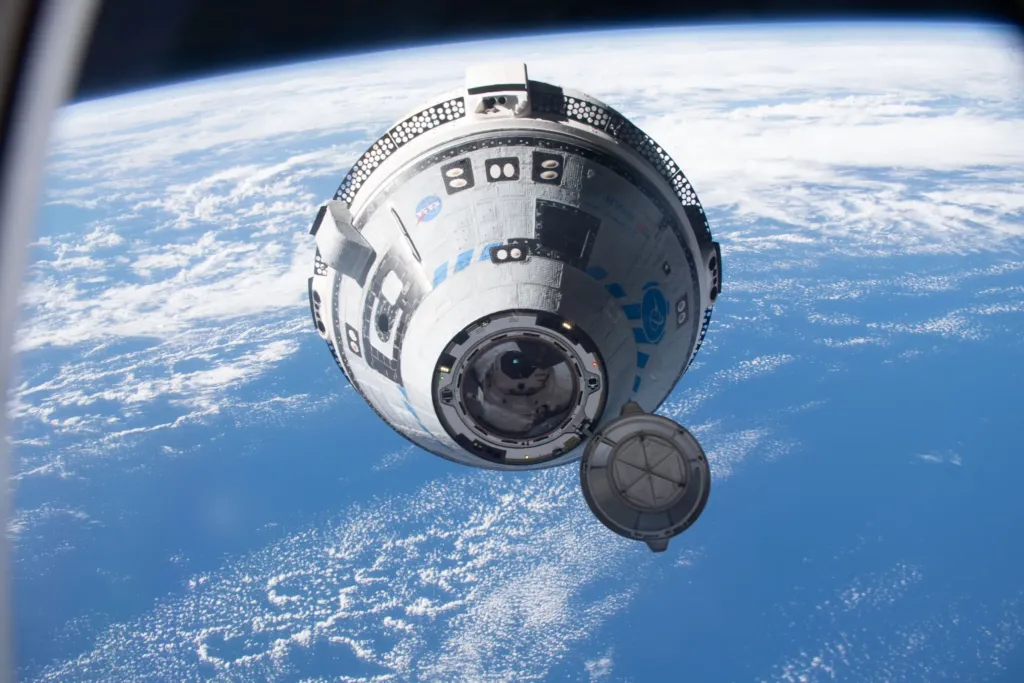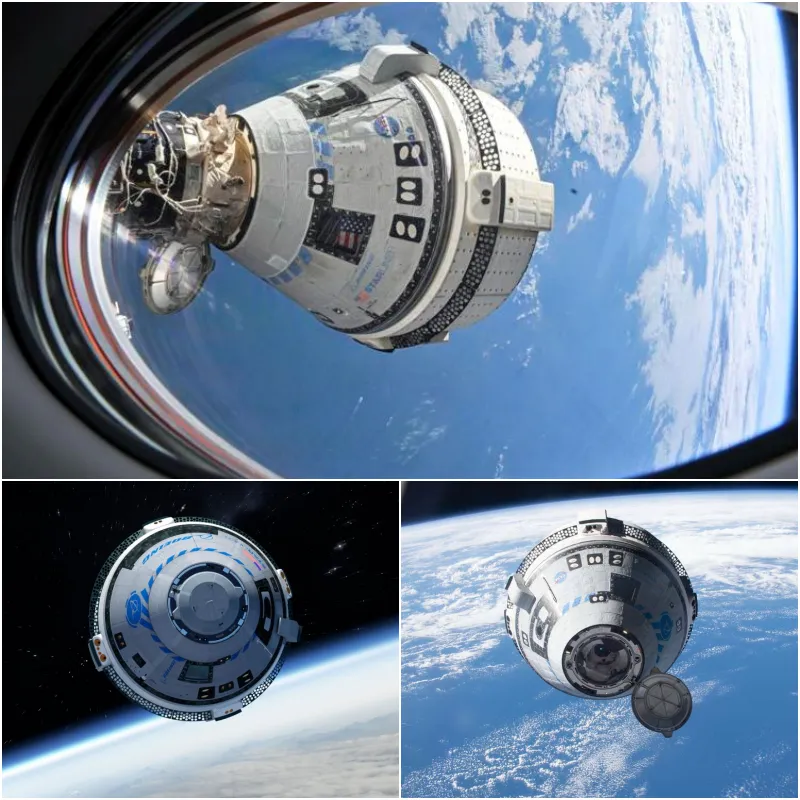
NASA Mulls Switching Astronauts from Boeing to SpaceX for Return Trip
What was expected to be a brief stay at the International Space Station for two NASA astronauts could stretch to eight months if they need to switch from Boeing to SpaceX for their return journey.

NASA officials expressed growing concerns over the safety of Boeing’s new Starliner capsule. As uncertainty surrounds the capsule’s readiness, the space agency faces a critical decision. Test pilots Butch Wilmore and Suni Williams might have to stay at the space station longer if Boeing’s Starliner is unable to safely return them to Earth.
The situation could lead to an unexpected switch: NASA might use SpaceX’s upcoming flight to bring Wilmore and Williams home. This potential change would mean leaving behind two of the four astronauts scheduled for SpaceX’s late September mission, with Wilmore and Williams potentially occupying those seats on a return flight next February. The astronauts initially expected a brief mission, having launched on June 5 as Starliner’s first crew.
NASA is actively investigating the thruster issues that plagued the Starliner before it could dock. In response, the space agency is also considering SpaceX as a backup option.
“We’re currently evaluating both options,” said Ken Bowersox, NASA’s space operations mission chief. “The decision is not straightforward, and we’re carefully weighing the risks. A final decision is expected by mid-August.”
Boeing responded with confidence, asserting that the Starliner capsule is still capable of safely returning astronauts.
“We maintain our belief in Starliner’s capabilities and its flight readiness,” the company stated.
Should Starliner end up returning without a crew, Boeing will need to adjust the capsule’s software accordingly. No serious consideration has been given to launching a separate SpaceX flight solely for the purpose of retrieving Wilmore and Williams.

Ground tests have replicated the thruster issues, revealing that seals may be a factor. However, the exact cause of the seals’ behavior—swelling when overheated and then shrinking—remains unclear. Notably, all but one of the Starliner’s five malfunctioning thrusters have been reactivated in orbit.
These thrusters are crucial for maneuvering the capsule, including backing away from the space station after undocking and maintaining proper positioning for deorbiting.
NASA is also addressing helium leaks in Starliner’s propulsion system, which are vital for its maneuvering capabilities. Initial leaks were detected before liftoff but were considered stable. However, additional leaks were identified during flight.
NASA contracted Boeing and SpaceX to transport astronauts to and from the space station following the retirement of the space shuttle program in 2011. SpaceX has successfully completed its first crewed flight in 2020, while Boeing’s initial test flight faced significant challenges and further delays.
As a precaution, NASA continues to emphasize the importance of having multiple spacecraft options.
“We want to ensure we have backup systems in place,” Bowersox emphasized. “Situations like this could arise again, and having multiple vehicles is crucial.”
SpaceX’s next crewed flight, its 10th for NASA, was delayed by a month to late September to allow additional time to address Starliner’s issues. The flight will include three NASA astronauts and one Russian cosmonaut. NASA officials declined to disclose which astronauts might be affected by the potential changes.



